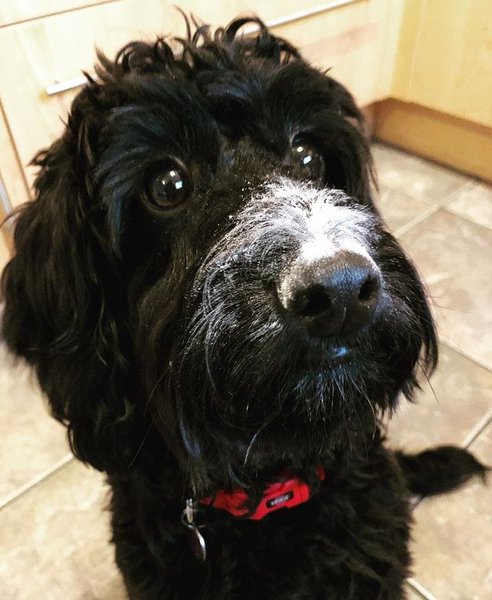The relationship between dogs and humans is an ancient and treasured bond that has been celebrated throughout history. As a result, the safety and wellbeing of our furry friends is of utmost importance. A common question that many pet owners have is whether or not flour is poisonous to dogs. This is a valid question as flour is often used in many human food products that may be shared with our pets. As a pet owner, it is essential to be aware of any potential toxins that may be present in the food we give our dogs, and flour is no exception. In this blog post, we will explore the potential risks associated with feeding your dog flour and provide some helpful tips to keep your pet safe.
Eating a Lot of Flour
As was previously stated, dogs who consume an excessive amount of flour for their size may experience health issues. One of them is that consuming dry flour all at once may result in constipation. However, if your dog appears to be uncomfortable or in pain and hasn’t gone in a day or so, it’s time to call the veterinarian.
My dog ate flour what should I do?
The amount of flour consumed by your dog will determine how quickly they recover if they just gobbled it up.
Because flour is not toxic to dogs, your dog should fully recover after consuming it.
Dogs with a gluten intolerance are the only exception to this rule, but I will go into much more detail on that in a later section.
You can anticipate your dog to either vomit at some point fairly soon or to experience one or more episodes of diarrhea if he or she has consumed a significant amount of flour (and by substantial I mean more than a few licks out of a bag).
Additionally, your dog won’t find it to be a very comfortable situation.
Imagine that lump of flour passing through your dog’s system; you can expect them to appear a little downhearted as they probably feel a little queasy.
Make sure your dog has access to plenty of fresh water.
Additionally to softening the lump of flour, water will also help your dog’s throat, which may be lined with flour and be very dry.
And if your dog is game, I’d advise feeding them normally but perhaps giving them a smaller portion.
For about 24 hours, your dog should be a little “off color,” but if they exhibit any additional symptoms, contact your veterinarian.
Can Dogs Eat Raw Flour?

from Instagram:
The best course of action would be to never give your dog access to raw flour. Here are three health risks your dog will encounter if they accidentally eat raw flour to give you an idea of what might go wrong.
FAQ
What should I do if my dog ate flour?
The best course of action if he consumed uncooked flour would be to drink a lot of water. We don’t want the stomach’s acid to create gluten, which could end up stuck in the intestine. Although dog have much stronger stomach then ours. Keeping hydrated is the best option.
What flour is safe for dogs to eat?
If you choose to use wheat flour in a recipe for your dog, bear in mind that whole-grain wheat flour has more nutritional value than white wheat flour, which has been heavily processed.
Can dogs eat flour and water?
Dogs don’t need to eat flour, and it can cause allergies in many animals. But to help bind ingredients, flour is a common ingredient in dog foods and treats. You should rely more on whole-grain flours, which are made from whole grains and contain all of the grain’s natural nutrients.